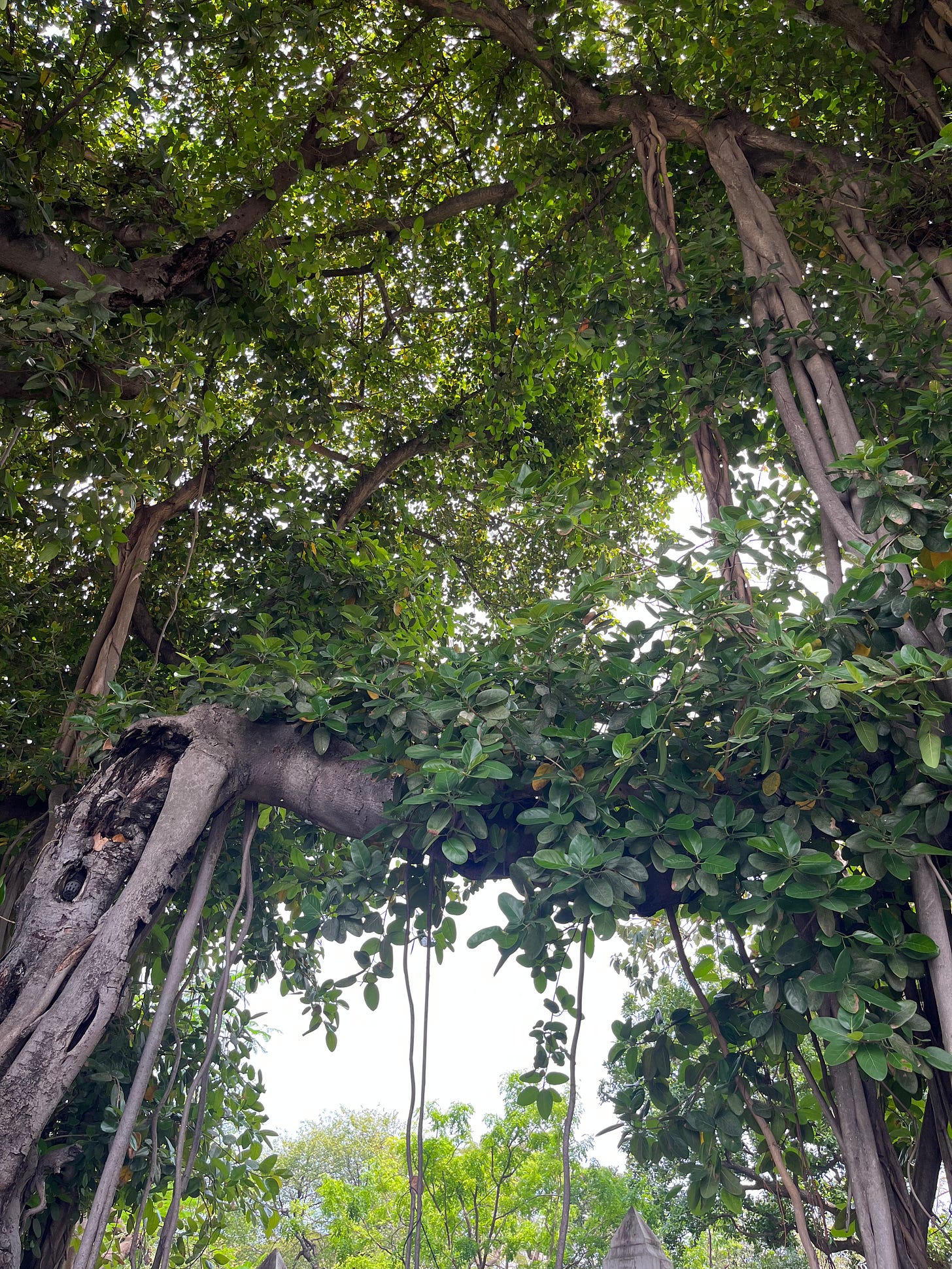The necessary imagination to resist Empire
Walking trees teach us
I couldn’t enter the royal palace in Bangkok, but I found something much more special: a wise Banyan tree, generations old, across the road. This Banyan watches over a busy intersection on Thanon Charoen Krung Street. It stands taller than the white walls protecting the palace. I stood under its canopy, most fascinated by the portal created between its branches. In between the two main trunks of the tree was a gap where I could see the park behind it and, beyond, the clear blue sky.
In most Southeast Asian cultures, Banyans are associated with the supernatural. They’re considered to be portals between the physical and spiritual realms. In India, Banyans symbolize all three gods of the Hindu trinity: Vishnu for the bark, Brahma for the roots, and Shiva for the branches. In the Philippines, these aerial-rooted trees are called Baletes and are linked to shamanism, of pre-colonial babaylan who led tribes through disease and famine with their spiritual intuition and animate ecological knowledge.
Understanding a Balete’s botany, it makes sense why the tree has become a symbol for spirituality and mysticism. A Balete is an epiphyte, a plant which grows on the branches of other trees, like the orchid flower that also calls the Philippines home. But a Balete grows over its host tree, slowly covering the old tree with its roots until the old tree dies. Sometimes, the center of a Balete is hollow from where the old tree used to be. It holds two lives within its body, what’s dead and what is presently alive. The Balete tree reminds us of our own cycles of life and death, of rebirth and remembrance.
Unlike other trees, a Balete “walks,” expanding its main trunk by rooting from its expansive branches. A timelapse of a Balete’s growth would make this clear. Baletes challenge Western science’s hierarchy of living things, of human supremacy over plants and animals. If a tree can “walk,” might a tree also remember? Might a tree also have agency? Baletes, while wordless, spark our imagination for more-than-human understandings.
For all their mystery, these trees hide a dark face. The project of colonization tainted Baletes with violence. In both India and the Philippines, they became trees of horror after native people of the land were killed by colonizers and hung on their branches. As Banu Subramaniam writes in Botany of Empire, the colonial project not only displaced people from the land but also displaced our stories, divorcing people from plants. They divided and categorized everything into its utility, draining the soul out of every living thing.
As more of us take on the challenge of resisting colonial-capitalist powers, it is crucial to reconnect with the land, whether it’s the land we call home or simply the land we find ourselves on. We turn to the natural world to find the necessary imagination to resist Empire. We send out our aerial shoots to root back into wonder and reverence for what long outlives us, trees.
These letters will always be free. If you enjoyed reading, please consider leaving a gift.





love this so much <3
Thanks for writing this! I love the Balete tree as a symbol of resistance. The image of the Balete "[growing] over its host tree, slowly covering the old tree with its roots until the old tree dies" makes me think of the concept of "building a new world in the shell of the old."